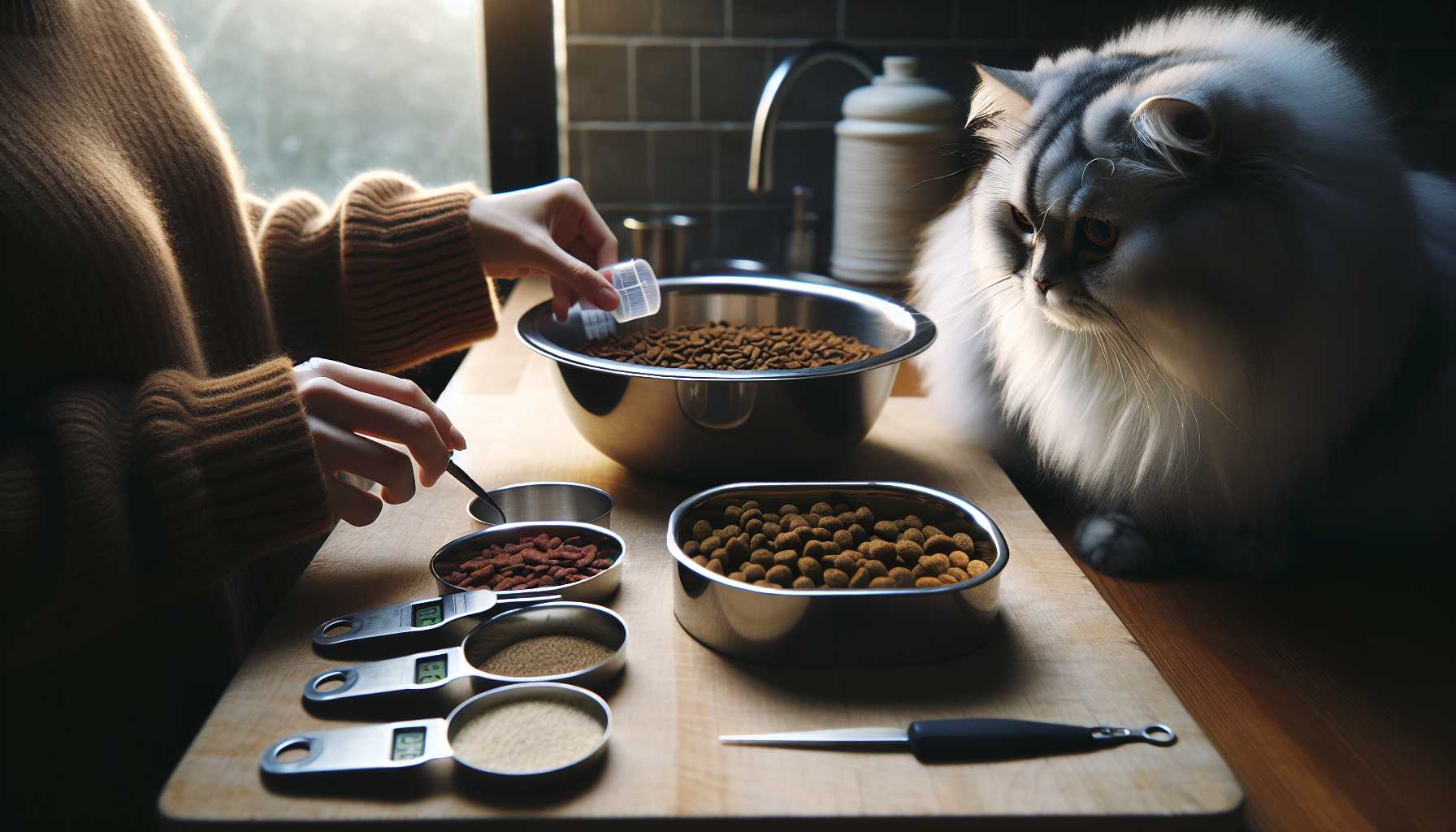Transitioning Foods for Allergic Cats: Step-by-Step Guide

Guiding Your Allergic Cat Through A Diet Change: Simplified Steps
Is your cuddly companion dealing with food allergies? Rest assured, you're not alone! Many cat owners face this conundrum, but don't fret – together, we can guide your feline friend towards a healthier diet, safely and effectively.
Deciphering Your Cat's Food Allergies
Before we get started, it's important to recognize the signals of food allergies in your cat. You need to watch out for symptoms such as: - Constant scratching - Skin inflammation - Digestive problems - Regular vomiting - Bald patches
Before you take any steps towards a diet change, consult with your veterinarian for a diagnosis. No one knows your cat's health better than the vet!
Selecting the Ideal Dietary Substitute
Searching for a food substitute demands mindful deliberation. Here's what you must look for: - Restricted ingredient meals - Unique protein options - Grain-free choices (if preferred) - Superior quality components
Do not forget, every cat's palate and dietary needs are unique. The goal is to identify a meal that suits your feline's specific needs!
Detailed 10-Day Diet Transition Plan
Follow this day-by-day regimen for a smooth transition:
Days 1-3: - 75% current food - 25% fresh food
Days 4-6: - 50% current food - 50% fresh food
Days 7-8: - 25% current food - 75% fresh food
Days 9-10: - 100% fresh food
Checking Your Cat's Reaction
Closely observe your feline pal throughout the diet change. Monitor for: - Altered dietary habits - Stool formation - Energy fluctuations - Skin healing - General behavior
Suggestions for Successful Transition
Changing your furry friend's diet need not be a nerve-wracking adventure! Implement these suggestions to ease the process: - Maintain consistent feeding times - Warm up the food a bit - Utilize their usual feeding dish - Provide ample fresh water - Shower your cat with extra affection and praise
Recognizing a Need to Pause or Halt
Occasionally, our feline companions require a tad more time to adjust. Look out for these caution signs: - Distrust towards food - Loose motions - Regurgitation - Laziness
If any of these signs appear, slowly ease up on the transition or consult your vet.
Upholding the New Eating Regimen
Once you've made the transition successfully, maintaining a uniformity in the diet is crucial! Keep the following recommendations in mind: - Properly store the new food - Avoid mixing other food items - Stick to the same food manufacturer - Align treats with the new food option - Regular veterinary appointments
Just remember, every cat is unique and having patience will be your greatest asset during this journey. However, the rewards will be worth it—a happy, healthy, furr-tastic friend! Have you ever guided your feline through a diet transition? We would love to hear your story!
Handy Tip: Maintain a food diary during this transitional phase. It will come in handy to help monitor your progress and provide useful details for your vet, if necessary.
Your commitment to your cat's wellbeing is commendable—keep going! Proceed cautiously, maintain an optimistic attitude, and don't forget to relish the minor triumphs along the way.